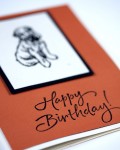Whether you are writing a hand-written letter or an email, choosing the appropriate salutation can go a long way in communicating the tone that you want in your correspondence. While they’re only a few precious words, openings and closings can say a lot about what you want to accomplish in your letter or email.
The first step is to establish the kind of relationship between you and the recipient. If it’s a co-worker or business associate, you will most likely want to stick with salutations closer to formal than not. Cover letters, insurance claims, birthday cards for clients and letters of recommendation are all great examples of instances that always require the use of formal language. If possible, address your letter or email to a specific person. It’s always a more formal method of communication to do so, but if it’s not possible, making sure you maintain a formal tone to an unknown recipient will suffice.
If you are writing to a friend or family member, however, it might be more appropriate to go with something a little more casual. The main objective of such a letter should be to convey a sense of friendliness or at least familiarity. You should feel more at ease to take liberties in the way you address and close your note. You can think of informal letters as having more of a conversational tone than anything else. Instead of using a colon after your formal greeting, you can use a comma when you’re writing informally.
Here are just a few examples greetings and closings for both formal and informal forms of communication:
Greetings
Formal:
- “To whom it may concern:”
- “Dear Sir or Madame:”
- “Dear [name with a title, i.e. Dr. Jones or Mrs. Smith]:”
Informal:
- “Hello,”
- “Hi,”
- “Dear [nickname],”
Closings
Formal:
- “Regards,”
- “Best,”
- “Sincerely yours,”
Informal:
- “Thanks,”
- “See you soon,”
- “Love,”
